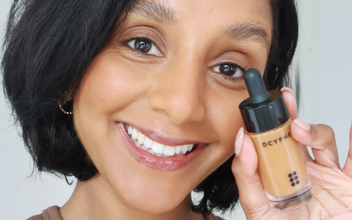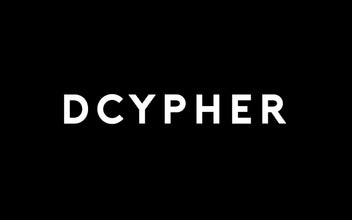Foundation. We’ve all heard the term, been confused by it, thought we’ve understood it, and (probably) spent hours trying to choose the perfect bottle. But what exactly is foundation, and how did it come to be the makeup staple it is today? Read on to find out.
Why does foundation exist?
The biggest clue to foundation’s purpose is in its name. This makeup is used to create an even base (or ‘foundation’) on the skin, prior to more colourful products being added. So while you might hear claims that it’s best to wear a shade of foundation that’s more vibrant than your skin, the ideal foundation will match perfectly with your natural complexion.
The history of foundation
So how did it all begin? The earliest foundations can be traced back to Ancient Greece and Rome, when paler skin was seen as fashionable – especially for women. Unfortunately, they used a type of poisonous chalk known as white lead to achieve this, which had some disastrous consequences – think rotten teeth and discoloured skin. But that didn’t stop them, and the trend continued for many centuries. Those portraits of Queen Elizabeth I with ghostly pale skin? That’s white lead in action.
Fast forward to the 1800s, and we find newer ingredients like zinc oxide, glycerin and calamine lotion being used to create imperfection-covering foundations. A few decades later, German actor Carl Baudin mixed up zinc, ochre and lard to hide the joint between his wig and forehead while onstage. The concoction became known as greasepaint, and was sold commercially for years.
It wasn’t until 1935 that makeup icon, Max Factor, created the first modern foundation – a powder-based formula known as pancake, which is applied to the skin with a damp sponge. You can still buy pancake makeup today, but it’s much less popular than modern alternatives.
When in 1952, beauty company, Coty, made Instant Beauty – a lightweight, grease-free tinted foundation formula – it was an immediate success. Other brands followed, and the beauty world hasn’t looked back since.
What are the ingredients in foundation today?
Today’s foundations come in a vast variety of formulations, shades, coverage types and consistencies – each one promising a different look or feel for the skin.
But what goes into the most popular format (which we blend here at DCYPHER) liquid foundation?
They have careful balance of silicone-based polymers, water and mineral pigments which makes them lightweight, versatile and easy to blend. They work with pretty much all skin types, and help you achieve the natural radiance you’ve been dreaming of.
The silicone-based polymers enable your foundation to glide smoothly onto your skin giving a soft smooth finish while keeping it breathable.
Combining with water creates an emulsion which provides the cream-like texture and leaves a great finish on your skin.
And the mineral pigments, when mixed in the right proportions, create the shade of your foundation.
At DCYPHER we also use plant-based glycerin for a moisturising quality, and several other natural, paraben-free ingredients to make sure your foundation glides on and stays on.

How to find the right foundation for you
The key to finding the right foundation is to get the colour or shade correct by considering:
- Your tone or depth of colour
- Your undertone - the balance of red and yellow in your skin colour
- The vibrancy - so that it's not too orange or too grey
For a more indepth overview, read our How to find your foundation shade? article.
Once you think you've found your colour you need to the test it. The best way to do this is to swatch or apply your foundation and check the match in natural light. Natural light is a more neutral light source than indoor lighting, for example. And don't forget to allow time for it to dry; the colour when wet is not the same as when it is dried and the final colour will develop over 20 to 30 minutes.
You can try foundations from the high street, go to a concession stand in store or you try one of the online foundation finders. But these options only offer a limited range of shade that you have to match to.
At DCYPHER we don't match you to a closest shade. We custom mix each and every foundation, from scratch, to your exact skin tone.
First, our Skin Tone Analyser uses world-first technology to scan your skin from three photographs, before asking three key questions to determine what you like when it comes to coverage and finish. It assigns you a unique Skin Tone ID, and from there, our advanced equipment blends a formula just for you – always from scratch.
Four pigments, one unique foundation shade
But how do we get the exact shade, every time? That brings us to pigments – the final key ingredients in any foundation. Pigments are minerals that give your makeup colour and determine its level of coverage. Usually, foundation pigmentation starts at two percent, but it can rise to more than 15 percent in the highest coverage products.
Here at DCYPHER, we expertly blend every foundation using just four pigments: black, white, red and yellow. Using hyper precise measures of these colours, we meticulously mix makeup drop by drop to your one-of-a-kind Skin Tone ID.
So what is foundation? Not just a critical tool in your makeup arsenal, but an artform in itself too. Thanks to advanced technology and expert colour science, this centuries-old product has the power to transform your look – and the best part is, you don’t even have to leave the house.
Start your mixed to measure foundation journey.











